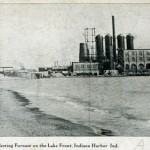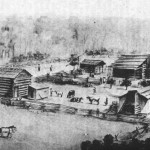A philanthropic campaign undertaken a century ago left a permanent mark on the American urban landscape. From 1890 to1917, steel magnate Andrew Carnegie donated funds for the construction of 1679 public libraries in towns and cities across the country—not to mention 830 others around the world. For the self-made man who had immigrated to the U.S. from Scotland, public libraries represented the meritocratic philosophy of success through self-improvement. The concept of resourcefulness was further embodied in the open stacks system implemented in all of the new libraries; patrons no longer relied upon a clerk to retrieve their books, but could browse the collection themselves.
164 Carnegie libraries were built in Indiana—more than in any other state. Communities requesting funds were required to demonstrate the need for a library, provide a suitable tract of land, and establish a tax that would generate funds amounting to one-tenth the original grant annually for the maintenance of the institution. Although many were built in the Beaux Arts style, there was considerable architectural variety among the Carnegie libraries built in the state, and across the country. The first library in Indiana built with Carnegie funds was the domed structure dedicated in Goshen in 1903, designed by the Chicago architectural firm of Patton and Miller. Indiana received its last grants for Carnegie libraries in Lowell and North Vernon in 1918.
Although it is said that most requests for funds were granted, the process could be a lengthy one. The Carnegie Corporation made an initial pledge in 1901 of 15,000 dollars for the construction of a library in Bloomington, but the community’s inability to codify the library tax postponed negotiations for more than a decade. Buying a lot, attempting to secure additional building funds and haggling over blueprints delayed construction even more. Bloomington’s Carnegie library finally opened its doors in 1918.
More than half of the Carnegie libraries in the country are still operating as such; others have been converted into municipal buildings, art centers, or residences. Although as of 1990, at least 242 of the original buildings across the country had been demolished, the public library system in place today is considered Carnegie’s lasting legacy.
For more information on the Carnegie Libraries of Indiana, go to: https://www.historiclandmarks.org/noted/restored/restored0106.html






















